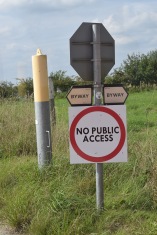‘Feelings are bound up in place, and in art, from time to time, place undoubtedly works upon genius.’ Eudora Welty
The two Walkshops in Brighton and Bristol explored ways of walking, connecting sensual responses with the landscape and personal narratives. Different approaches included: walking the rim of a glass, walking with a question, mindful walking, following the map and walking instinctively – not as easy at it sounds, with our tendency to overthink decisions, rather than using our intuition. ‘Where do my feet want to go?’ was a genius question one participant asked, which got me thinking about our relationship to our feet. Increasingly, we hear research on how we ‘think’ with our hands. What could our feet tell us, if we paid attention?
Practically everyone who walked using a map, found it interrupted their rhythm; it became a series of stops and starts preventing reflection or the free association of thoughts. Instead of focusing on the process, it framed walking within a goal, a destination to be reached. For some, the reality of the OS map didn’t correspond with internalised maps of place. Reading it felt ‘unnatural’, impossible to summon land from the lines, in the same way, I imagine, it’s difficult for most of us to summon a Bach Cantata from a score of notes, sharps and accidentals.
 Walking the rim of the glass raised awareness of the numerous barriers we encounter on our explorations: keep out, private land, no access permitted – land is parcelled and privatised, forcing us to detour or retrace our steps. Then, there are our own barriers; fears in the shape of cattle, vacant lots, and empty river banks, making us instinctively uncomfortable.
Walking the rim of the glass raised awareness of the numerous barriers we encounter on our explorations: keep out, private land, no access permitted – land is parcelled and privatised, forcing us to detour or retrace our steps. Then, there are our own barriers; fears in the shape of cattle, vacant lots, and empty river banks, making us instinctively uncomfortable.
Overwhelmingly, the landscape is full of memory; palimpsests of other places, people and times, transporting us back to to our pasts; the images as real in our mind as the earth beneath our feet, prompting suggestions from walkers, that we rarely ever walk in the present, but between layers of time, drifting backwards and forward, connecting memories and associations with our present surroundings.
There was a temptation to play, most resisted. Perhaps it was the rain. Walkers surveyed the land, entering it slowly, hesitantly, hand in hand with the ghosts of childhood; an urge to slide down rocks and climb trees, roll in the grass and trespass. A reminder of how children approach landscape with their bodies, whilst as adult we approach it with their minds.

To walk mindfully, to pay attention, means slowing down, being conscious of each muscle moving, each sound, the tones and textures arising from the land. For those who could slow themselves to near stillness, another world emerged from the familiar: ochre lichen rough against skin, rain dripping from beech leafs, oily black skinned rivers. But, it was hard. It felt awkward, unnatural to go so slow when our norm is to hasten efficiently and purposefully onwards.
The journey now is to use the explorations and reflections on the experience to create individual narrative maps, linking internal and external journeys, developing and deepening connections to place. Spoken Word Events in Brighton and Bristol will take place this autumn.


Facebook: #writingthemap
Twitter @writingthemap
Instagram: writingthemapcs


